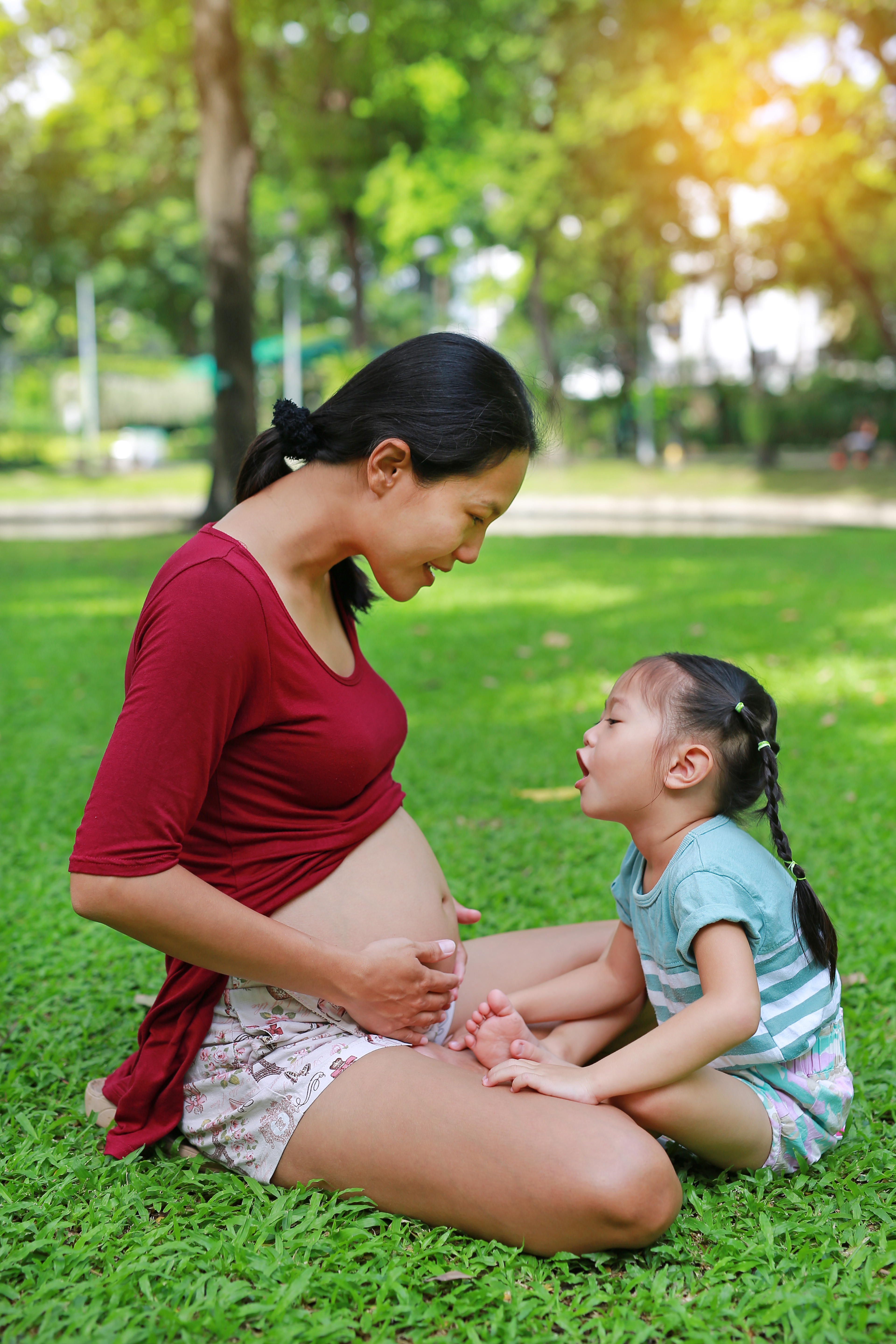
Wouldn't it be amazing if you could help your children begin bonding, even before the baby is born? You can! Here are twelve easy tips to get your children's relationship off to a positive start, even while the baby is still in utero!
1. Wonder aloud what the baby is doing in there.
Sucking a thumb? Hiccupping? Practicing karate kicks? Wonder how the baby is feeling: Maybe enjoying her big sister’s singing?
Research shows that when parents discuss how a baby is feeling, older siblings develop more empathy and are less aggressive toward their little sibling. While the research isn’t conclusive yet on what happens if we start this process while the sibling is in utero, we do know that parents begin bonding to their baby before birth. So why not big siblings? Start now to help your child think of his sibling as a real person, with needs and feelings.
2. Encourage your child to connect with the baby.
For instance, tell her that the baby can hear her sing and talk, and will recognize her voice once he’s born. Let her kiss your bump and show it her toys. Suggest she make art to decorate his room, so he can enjoy it as soon as he’s born.
3. Be the physical and emotional conduit for your children’s warmth toward each other.
When your child makes an effort to connect with the baby, stop and let yourself feel your appreciation and warmth. Since your baby feels what you feel emotionally, the baby will begin to associate your child’s voice with feeling good. You can get this positive association developing in the other direction as well, by telling your child how delighted the baby is by his song or kiss, so he begins to develop warm feelings toward the baby.
4. Make it her baby, too.
Refer to "Our baby" or "Your sister" or even "Your baby." This isn’t really about ownership, of course--your children belong to themselves. But you say “My baby” to express that special relationship. Why shouldn’t the baby’s big sib?
5. Take him with you to the doctor to hear the baby's heartbeat.
Make sure his heartbeat gets listened to, also. Talk about when you first heard HIS heartbeat and how excited you were.
6. Ponder potential baby names together.
The sooner you can refer to the baby by name, the more real he’ll seem. If you can let her "name" the baby (at least the middle name) with a name you love, all the better.
7. Buy your child a doll.
Encourage him to practice nurturing, changing diapers, feeding, wearing the baby in a sling, etc. Let him use his doll to show you all the things he’s learning about from reading with you, about what babies need and how he’s going to help care for his brother.
8. Speak to your baby, in your child’s presence, about how lucky he will be to have such a wonderful big brother.
Mention all the things your child can do and will show the baby how to do, all the fun they will have together once the baby grows up a little.
9. Encourage your child to play with the baby.
When the baby kicks, let him poke very gently to see if the baby will kick again.
10. Tell him stories about when he was a baby.
Explain how he loved to be held, and loved it when you carried him around and showed him things. This will help him to feel valued, and will also help him begin to understand what the baby will be like.
11. Let her choose any furniture, toys and clothes that she’s ready to pass on to the baby.
Let her help you arrange and paint the baby's room and get everything ready.
12. Consider sibling birth classes.
These classes offer lessons on how to hold a baby, explanations of how a baby is born, and opportunities for your child to discuss his or her feelings about having a new brother or sister. If you do this education yourself, be sure your child understands that babies cry a lot at first and aren't ready to play for a long time. (Children are often shocked by the helplessness of babies. As my four year old son said when his sister was born, “She can’t even play with me, and that was the whole point!”)
Additional Resources:
This article was excerpted from my book Peaceful Parent, Happy Siblings, which includes a wealth of information (the entire last third of the book) on preparing your child for the new baby, introducing the new baby, and helping your child adjust to the various phases during the first year of being a big sibling. I'm honored at how often I hear from parents that this book was their most valuable resource in introducing a second or third child to their family.
And here are some terrific books to read with your child about the process of growing a baby. They don't really address what it will be like to have a sibling -- those books are on this page: Books about the New Baby for Older Siblings. The books below are appropriate to help answer your child's questions about how that baby got in there, and what it's doing for nine months! As always, please preview the book first to be sure you think it is appropriate for your child.
PLEASE NOTE: These books are Amazon links with photos of the books. If you are not seeing them on your page, it may be that your browser is not picking them up. Please try a different browser. Enjoy!











